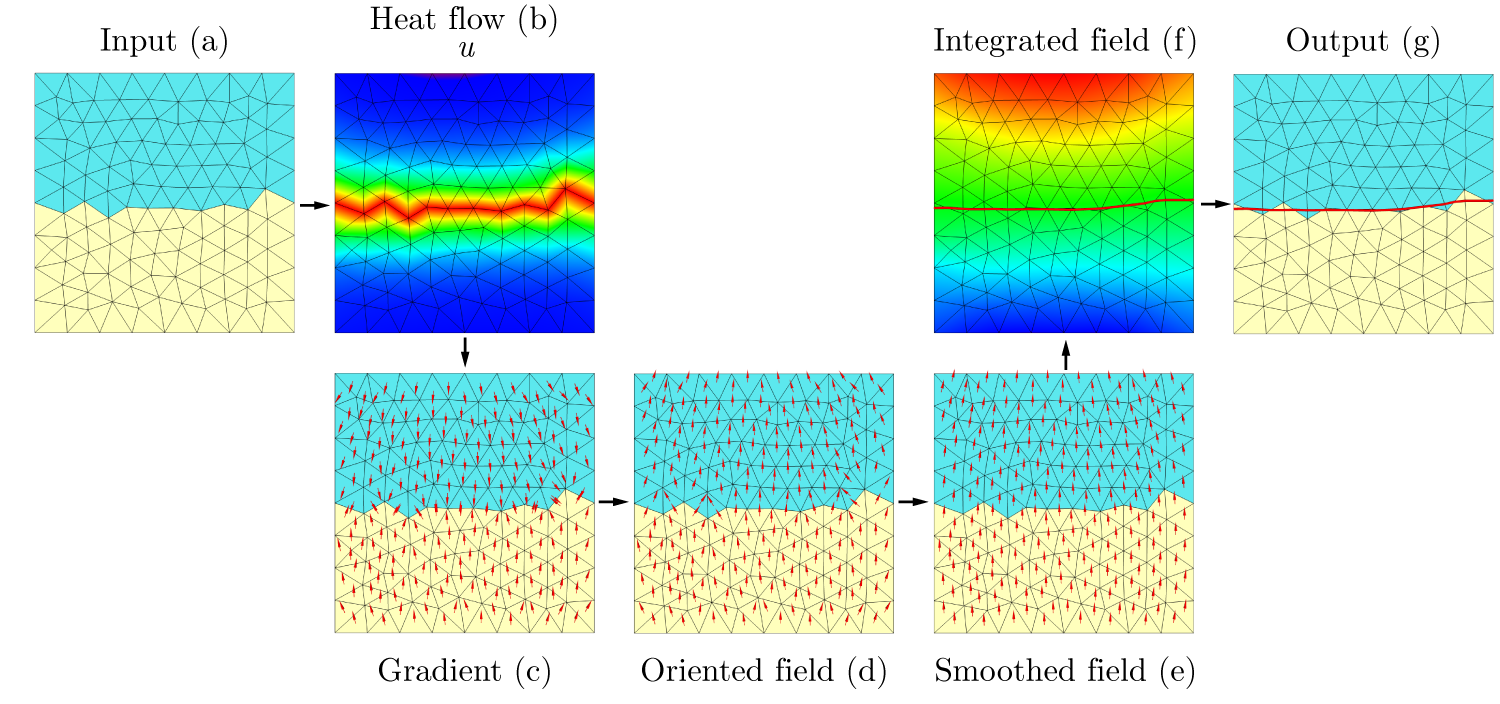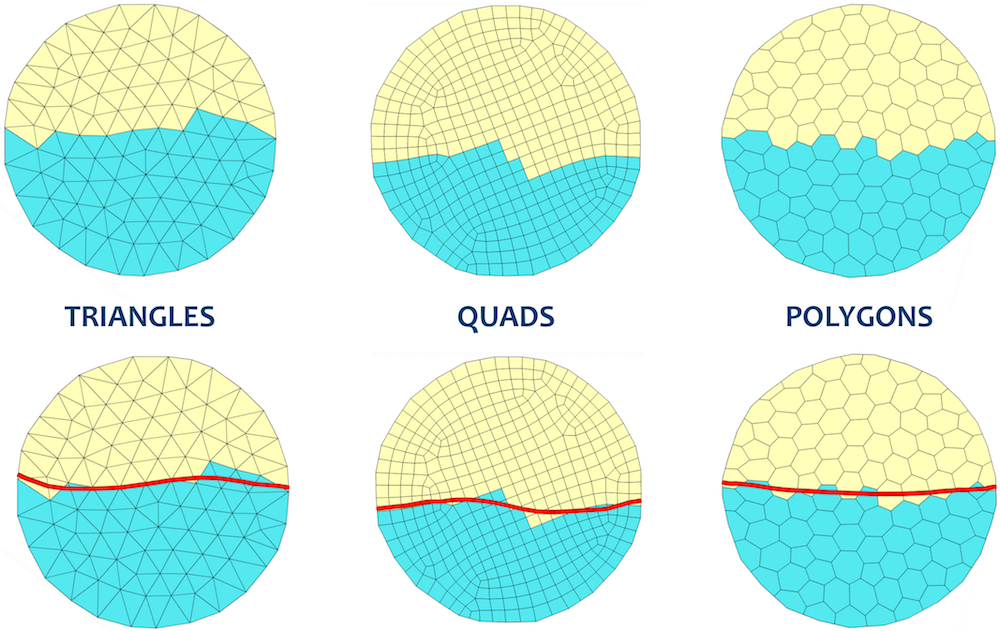A Heat Flow Relaxation Scheme
for n Dimensional Discrete Hyper Surfaces
Marco Livesu
Computers & Graphics, 2018 (extended version)
STAG: Smart Tools and Applications in Graphics, 2017 (earlier version)

ABSTRACT
We consider the problem of relaxing a discrete (n − 1) dimensional hyper surface
defining the boundary between two adjacent n dimensional regions in a discrete
segmentation. This problem often occurs in computer graphics and vision, where objects
are represented by discrete entities such as pixel/voxel grids or polygonal/polyhedral
meshes. A common approach consists in assigning to each element of the domain a value
(or label). Elements sharing the same label belong to the same region, whereas elements
with different labels belong to different regions. Segmentation boundaries are therefore
only intrinsically defined, and amount to the union of the interfaces between adjacent
elements having different label, which tend to be geometrically poor and expose a typical
jagged behavior. We propose a relaxation scheme that replaces the original boundary with
a smoother version of it, defined as the level set of a continuous function. The problem
has already been considered in recent years, but current methods are specifically
designed to relax curves on discrete 2-manifolds embedded in R^3, and do not clearly scale
to multiple discrete representations or to higher dimensions. Our biggest contribution
is a smoothing operator that is based only on three canonical differential operators:
namely the Laplacian, gradient and divergence. These operators are ubiquitous in applied
mathematics, are available for a variety of discretization choices, and exist in any
dimension. To the best of the author’s knowledge, this is the first intrinsically
dimension-independent method, and can be used to relax curves on 2-manifolds, surfaces
in R^3, or even hyper-surfaces in R^n. As such, not only it is useful to refine the
boundaries of discrete segmentations, but also for applications like data mining,
where clustering in high dimensional spaces often occur, and the refinement of the
clusters’ boundaries may be beneficial for classification algorithms.
DOWNLOADS
INDEPENDENCE FROM THE DISCRETIZATION

HIGHER DIMENSIONS

BibTex
@article{Liv17_extended,
author = {Livesu, Marco},
title = {A Heat Flow Relaxation Scheme for n Dimensional Discrete Hyper Surfaces},
journal = {Computers \& Graphics},
year = {2018},
volume = {71},
pages = {124 - 131},
issn = {0097-8493},
doi = {10.1016/j.cag.2018.01.004}}
@inproceedings{Liv17,
author = {Livesu, Marco},
booktitle = {Smart Tools and Apps for Graphics - Eurographics Italian Chapter Conference},
title = {{Heat Flow Based Relaxation of n Dimensional Discrete Hyper Surfaces}},
year = {2017},
publisher = {The Eurographics Association},
ISBN = {978-3-03868-048-2},
DOI = {10.2312/stag.20171222}}


